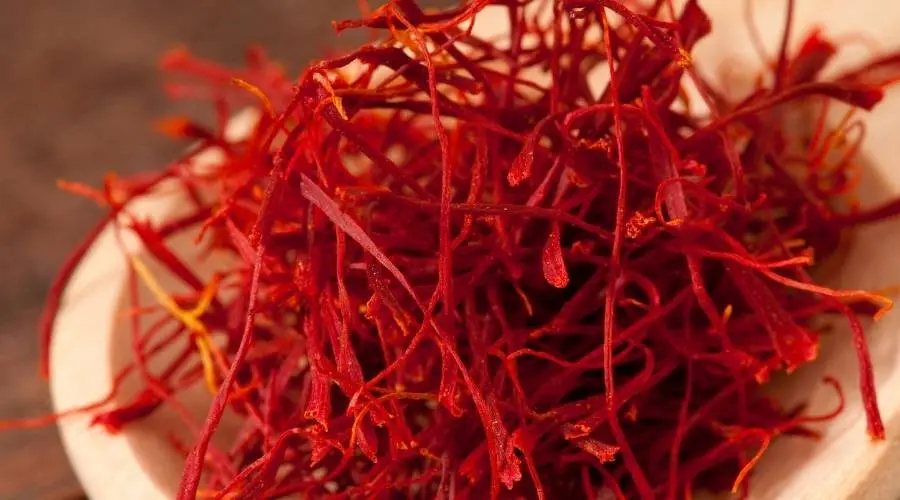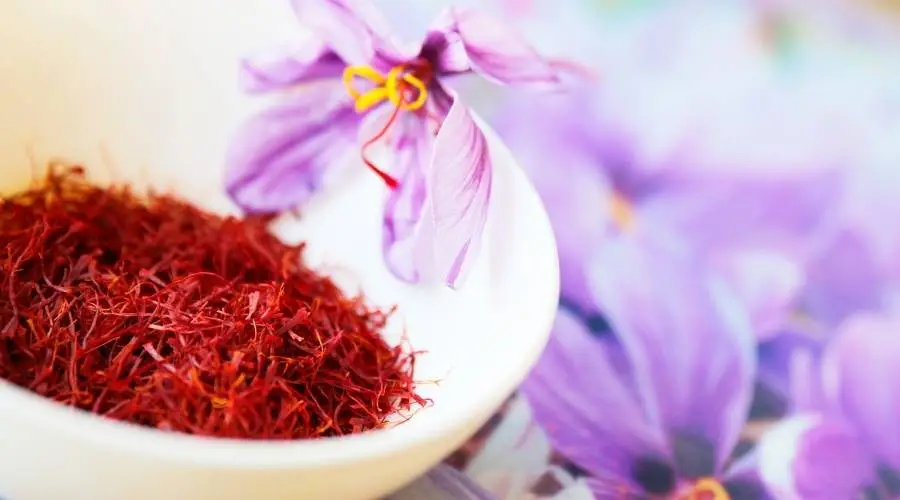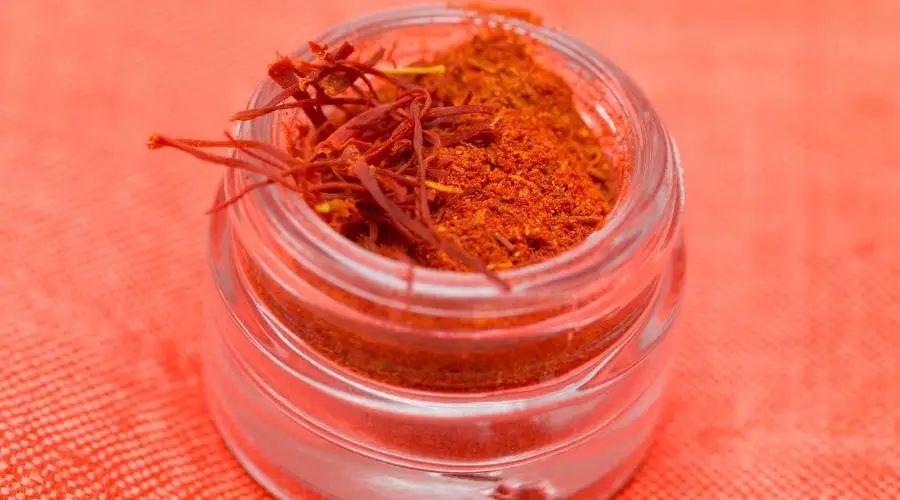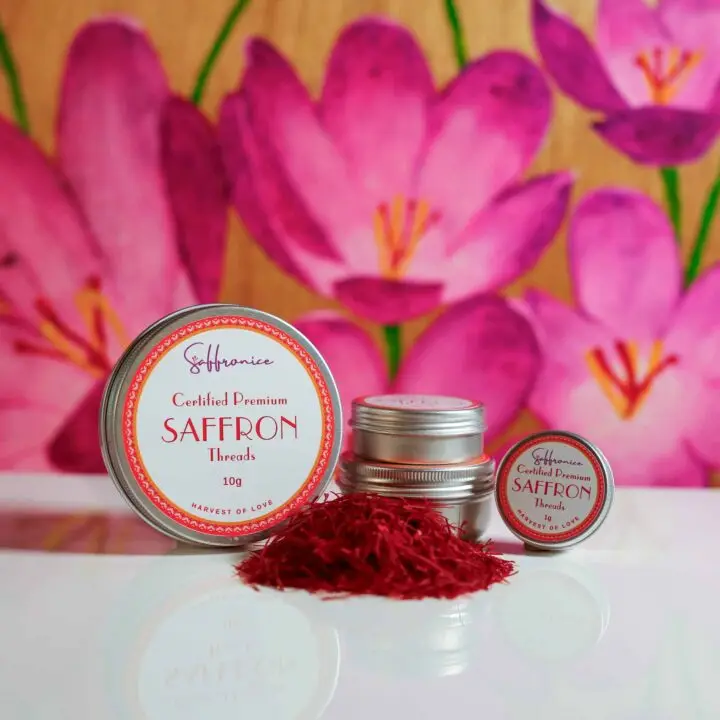📌 Quick Answer: Saffron is definitely classified as a spice, not a herb. It comes from the dried stigmas of the Crocus sativus flower, making it botanically and culinarily a spice according to standard culinary classifications.
Saffron, known for its rich aroma and vibrant color, holds a prestigious place in the culinary world. Derived from the delicate stigmas of the Crocus sativus flower, saffron is often debated as either a herb or a spice. Understanding what saffron truly is helps culinary enthusiasts appreciate the unique characteristics of this precious ingredient.
Its classification has significant implications for culinary enthusiasts. Understanding whether saffron is a herb or a spice can enhance your culinary knowledge and appreciation for this prized ingredient. In various saffron recipes worldwide, saffron plays a critical role in:
- Mediterranean delights like paella and bouillabaisse
- Middle Eastern dishes such as biryani and tagine
- Persian delicacies like Zereshk Polo and Tahdig
Saffron’s unique ability to add depth, complexity, and visual appeal to both savory dishes and desserts underscores its importance in global gastronomy. Grasping its true nature enriches our culinary experiences, making every dish infused with saffron a celebration of flavor and tradition.

The Scientific Classification: Why Saffron is a Spice
Understanding the Botanical Difference
The distinction between herbs and spices follows clear botanical guidelines that have been established by culinary professionals and botanists worldwide:
Herbs are defined as:
- Leafy green parts of plants
- Usually from temperate climates
- Fresh or dried leaves, stems, or flowers of non-woody plants
- Examples: basil, parsley, cilantro, oregano, thyme
Spices are characterized as:
- Any other part of the plant besides the leaves
- Often from tropical or subtropical regions
- Including seeds, roots, bark, fruits, buds, or stigmas
- Examples: cinnamon (bark), pepper (berries), ginger (root), and saffron (stigmas)
Chef’s Professional Tip: In my 20 years of professional cooking, I’ve never seen saffron stored with herbs. It’s always in the spice cabinet, often under lock and key due to its value. The way we use it—steeping in liquid to extract color and flavor—is typical spice treatment, not herb usage.
Food Scientist’s Note: From a botanical perspective, saffron consists of the dried stigmas (female reproductive parts) of Crocus sativus. These thread-like structures contain over 150 volatile and aroma-yielding compounds, primarily safranal, crocin, and picrocrocin. This chemical composition is characteristic of spices, not herbs.
Harvesting Methods That Define Classification
The journey of saffron from flower to kitchen is one of meticulous artistry, and understanding saffron harvesting methods explains why it commands such high prices and confirms its spice classification:
The Harvesting Process:
- Cultivation: The Crocus sativus blooms only for a brief period each autumn
- Hand Harvesting: Each violet blossom yields merely three vibrant red stigmas
- Separation: The fragile stigmas are separated by hand, a painstaking process requiring thousands of flowers for just one ounce
- Drying: The stigmas are gently dried, intensifying their fragrance and flavor.
This labor-intensive process and unique origin underscore why saffron is one of the world’s most coveted spices, not an herb. Its production story enhances its allure and elevates its value in every dish it adorns.
Saffron in Global Culinary Applications
Mediterranean Cuisine Excellence
In the Mediterranean region, saffron is an integral part of many beloved dishes, showcasing its spice characteristics through traditional cooking methods:
Spanish Paella: This iconic rice dish gets its vibrant color and delicate floral aroma from saffron threads infused in the cooking broth. The spice’s compounds release slowly during cooking, providing sustained flavor throughout the dish.
French Bouillabaisse: The traditional Provençal seafood stew is enhanced by saffron’s golden touch, which enriches both its appearance and taste with sophisticated warmth that develops during the slow cooking process.
Middle Eastern Culinary Traditions
Saffron plays a crucial role in Middle Eastern cuisine, where it demonstrates classic spice behavior:
Biryani: This extravagant rice dish layered with spices, meats, and sometimes dried fruits owes its complex depth and unmistakable fragrance to saffron. The spice’s compounds infuse the rice during steaming, creating layers of flavor.
Moroccan Tagines: These slow-cooked stews rely on saffron not only for visual opulence but also for subtle flavor that develops over hours of cooking—a characteristic behavior of spices rather than herbs.
Persian Gastronomic Heritage
Persian cuisine showcases saffron at its most indulgent, treating it with the respect due to a precious spice:
Zereshk Polo: This classic dish features jeweled rice adorned with barberries and pistachios, while strands of saffron infuse the grains with vibrant color and delicate perfume.
Tahdig: The revered crispy golden crust achieves perfection when brushed with saffron water—a ritual that highlights the ingredient’s status as culinary gold.
Sweet Applications
Saffron’s versatility extends beyond savory dishes, making it exceptional for enhancing desserts. The health benefits of saffron tea also demonstrate its medicinal spice properties:
Traditional Desserts:
- Baklava: Infusing this classic dessert with saffron imparts a rich golden hue and subtle floral notes
- Kulfi and Kheer: Indian desserts benefit from saffron’s luxurious essence and aromatic complexity
- Saffron Ice Cream: The spice imparts its characteristic yellow tint and sophisticated flavor profile
Quality and Grading: What Makes Premium Saffron
Understanding saffron grading systems helps you select the best quality for your culinary needs:
Grade Classifications
Super Negin: The highest grade with the longest, thickest threads and deepest red color. Negin: Slightly shorter than Super Negin but still premium quality
Sargol: All red stigmas with tips removed. Pushal: Contains some yellow/orange parts of the style
Authenticity Identification
Learning to spot the difference between real and fake saffron is crucial:
- Genuine saffron threads are trumpet-shaped
- They release color slowly when soaked in water
- Authentic saffron maintains its red color even after soaking
- The aroma is sweet and hay-like, never metallic
Storage Best Practices
Proper saffron storage methods preserve its potency and confirm its spice nature:
- Store in an airtight container away from light
- Keep in a cool, dry place
- Never refrigerate, as moisture damages the threads
- Use within 2-3 years for optimal flavor
Health Benefits of Saffron
Beyond its culinary applications, saffron offers numerous health benefits that have been recognized for centuries, further supporting its classification as a medicinal spice:
Scientifically Proven Benefits
Mood Enhancement: Studies show saffron may help with mild to moderate depression. Antioxidant Properties: Rich in crocin and safranal, powerful antioxidants
Memory Support: May improve cognitive function and memory. PMS Relief: Can reduce symptoms of premenstrual syndrome. Eye Health: Contains compounds that may protect against age-related macular degeneration.
Traditional Medicine Applications
The historical and cultural origins of saffron reveal its use in traditional medicine systems for:
- Digestive issues
- Respiratory problems
- Skin conditions
- Sleep disorders
- Aphrodisiac properties
Cultural Significance and Economic Value
Cultural Importance Across Cuisines
Saffron transcends mere culinary use to embody deep cultural significance:
Persian Culture: Symbolizes hospitality and is essential for Nowruz (New Year) celebrations. Spanish Culture: Considers saffron-infused paella a national treasure. Indian Traditions: Represents fertility and prosperity in wedding ceremonies. Moroccan Heritage: Showcases the fusion with other spices in traditional tagines
Economic Impact
Saffron’s economic significance stems from several factors that confirm its precious spice status:
Limited Growth: Saffron crocuses can only be cultivated in specific areas—mainly Iran, Kashmir, Spain, and Greece. Labor-Intensive Harvesting: Each flower produces only three delicate stigmas requiring hand-picking. Careful Processing: Stigmas need gentle drying to maintain fragrance and potency
These factors limit global supply while demand remains strong, making saffron one of the world’s most expensive spices. To ensure authenticity, research where to buy saffron online from reputable sources.
Practical Guide to Using Saffron
Proper Preparation Techniques
Understanding the proper daily saffron dosage and preparation methods ensures optimal results:
Blooming: Always soak threads in warm liquid (water, milk, or broth) for 10-15 minutes. Grinding: For even distribution, grind with a pinch of sugar or salt. Timing: Add saffron-infused liquid during the last stages of cooking. Amount: Generally, a pinch (20-30 threads) flavors dishes for 4-6 people
Expert Cooking Tips
Master the art of cooking with saffron using these professional techniques:
- Never add saffron directly to hot oil—it burns and becomes bitter
- Use both the soaked threads and the liquid for maximum flavor
- Combine with complementary spices like cardamom and rose
- Store prepared saffron water for up to one week refrigerated
Selecting Quality Brands
When purchasing, research saffron brands for purity, price, and source to ensure you’re getting an authentic, high-quality product that delivers the characteristic spice properties saffron is known for.

Understanding the Spice vs. Herb Debate
Clear Botanical Distinctions
The debate surrounding whether saffron is a herb or a spice often arises from misconceptions about botanical classification. To resolve this definitively:
Herbs: Typically refer to the leaves, stems, or flowers of non-woody plants (basil, parsley, thyme). Spices: Derived from other plant parts—seeds, roots, bark, fruits, or stigmas (cinnamon from bark, cardamom from seeds, saffron from stigmas)
Saffron originates from the delicate crimson stigmas of the Crocus sativus flower. Although the word “herb” may occasionally be used informally to describe any aromatic plant part, saffron’s source as a stigma firmly categorizes it as a spice in both botanical and culinary terms.
Practical Implications of Classification
This distinction isn’t merely academic; it informs:
Storage Methods: Spices like saffron require airtight, dark containers, unlike fresh herbs. Preparation Techniques: Saffron needs to bloom in liquid to release compounds, unlike herbs added directly. Flavor Profiles: Understanding spice characteristics helps predict proper pairings. Culinary Applications: Explains why saffron is used sparingly and why herb substitutions won’t work.
Regional Variations and Applications
Mediterranean Traditions
Mediterranean cultures have embraced saffron as a cornerstone spice for centuries:
- Spanish paella showcases saffron’s ability to infuse entire dishes
- Italian risotto alla milanese demonstrates the spice’s creamy applications
- French cuisine uses saffron in both savory and sweet preparations
Asian Culinary Heritage
Asian cuisines treat saffron with the reverence due to a precious spice:
- Indian biryanis layer saffron for complex flavor development
- Persian rice dishes celebrate saffron’s golden transformation
- Middle Eastern desserts showcase the spice’s sweet applications
Modern Culinary Innovation
Contemporary chefs continue to explore saffron’s spice properties:
- Molecular gastronomy techniques extract pure saffron essence
- Fusion cuisines combine saffron with unexpected flavor profiles
- Artisanal producers create saffron-infused specialty products
Conclusion
Understanding why saffron is classified as a spice instead of an herb can greatly enhance your appreciation and knowledge of cooking. This distinction is important because it affects how saffron is used, stored, and valued in culinary applications.
The botanical origin of saffron from flower stigmas, combined with its chemical composition and traditional usage patterns, definitively places it in the spice category. This classification informs everything from storage methods to preparation techniques and explains why saffron commands such high prices and respect in culinary circles.
When you include saffron in your cooking, you’re not just improving the taste and appearance of your food, but also connecting with its rich cultural and economic history. Whether you’re making a Persian Tahdig or giving desserts an extravagant twist, knowing that saffron is a spice—and understanding the scientific and culinary reasons behind this classification—can elevate your culinary skills.
The distinction between herb and spice isn’t merely academic; it informs storage methods, preparation techniques, and culinary applications. As a spice derived from flower stigmas, saffron requires specific handling to preserve its delicate compounds and maximize its impact in your dishes.
FAQ
Is saffron classified as a herb or a spice?
Saffron is definitely classified as a spice, not a herb. It is derived from the stigmas of the Crocus sativus flower, which, according to botanical and culinary definitions, makes it a spice. Herbs come from leafy parts of plants, while spices come from other plant parts like seeds, bark, roots, or, in saffron’s case, stigmas. This classification is universally accepted in both scientific and culinary communities.
What are some common culinary uses of saffron around the world?
Saffron is extensively used across global cuisines. In Mediterranean cooking, it’s essential for Spanish paella and French bouillabaisse. Middle Eastern cuisine features it in biryani, pilaf, and tagines. Persian cooking uses it in rice dishes like Tahdig and Zereshk Polo. Indian cuisine incorporates it in sweets like kulfi and kheer, as well as in celebratory dishes. Saffron also appears in Italian risotto alla milanese and Moroccan harira soup. Its versatility spans both savory and sweet applications.
How does saffron enhance desserts in different cuisines?
In desserts, saffron adds three key elements: a distinctive golden-yellow color, a subtle honey-like floral aroma, and a complex flavor that’s both sweet and slightly bitter. In Middle Eastern sweets like baklava, it’s often combined with rose water and cardamom. The spice transforms simple milk-based desserts like Indian kheer or Persian bastani (ice cream) into luxurious treats. Just a few threads can elevate any dessert from ordinary to extraordinary.
What is the significance of saffron’s harvesting process on its classification and value?
The harvesting process directly impacts both classification and value. Each Crocus sativus flower produces only three stigmas, which must be hand-picked during a brief 2-3 week harvest window. It takes 150-200 flowers to produce just one gram of saffron, and about 75,000 flowers for one pound. This labor-intensive process explains why saffron costs $5,000-$10,000 per kilogram. The stigma origin definitely classifies it as a spice, while the intensive labor justifies its position as the world’s most expensive spice by weight.
Why is understanding whether saffron is a herb or a spice important for culinary knowledge?
This understanding affects several practical aspects of cooking. Spices like saffron require different storage methods (airtight, dark containers) than fresh herbs. The preparation differs too—saffron needs blooming in liquid to release its compounds, unlike herbs that can be added directly. Knowing it’s a spice helps predict flavor profiles and proper pairings. It also explains why saffron is used sparingly and why substitution with herbs won’t work. This knowledge prevents common mistakes like adding saffron directly to hot oil or expecting immediate color release.
What cultural importance does saffron hold in different world cuisines?
Saffron transcends mere culinary use to embody deep cultural significance. In Persian culture, it symbolizes hospitality and is essential for Nowruz (New Year) celebrations. Spanish culture considers saffron-infused paella a national treasure. In Indian and Pakistani weddings, saffron represents fertility and prosperity, often mixed in celebratory drinks. In ancient times, saffron was used in religious ceremonies and royal courts. Today, gifting saffron still represents respect and honor in many Middle Eastern and Asian cultures, confirming its status as a precious spice rather than a common herb.



